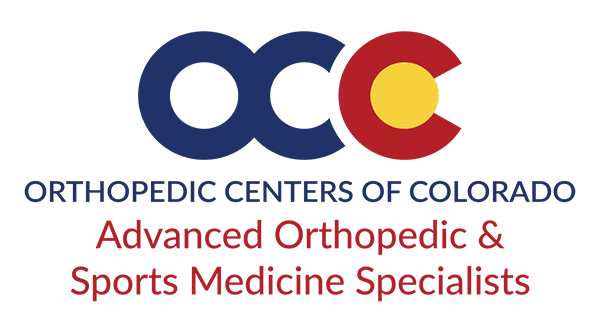A rotator cuff tear is a common injury, especially among athletes and active individuals. Understanding what a rotator cuff tear is, how it happens, and what treatments are available can help you manage your pain, avoid further injury and get on the road to recovery.
What is a Rotator Cuff Tear?
The rotator cuff is a group of four muscles and their tendons that stabilize the shoulder joint and allow for a wide range of shoulder movements. A rotator cuff tear occurs when one or more of these tendons are torn, either partially or completely. This can result from an acute injury or degeneration over time.
Symptoms of a Rotator Cuff Tear
While each person’s experience is unique, common symptoms of a rotator cuff tear include:
- Pain: Often felt in the front and side of your shoulder, especially when lifting or lowering the arm.
- Weakness: including lack of strength to lift or rotate your arm.
- Limited range of motion: Inability to move the shoulder through its full range of motion.
Causes of Rotator Cuff Tears
Rotator cuff tears can result from degenerative changes that occur with aging, leading to wear and tear of the tendons, but are also often caused by acute injuries. These vary widely and include falling on an outstretched arm (known as “FOOSH”), lifting something heavy, or an aggressive swing of the arm, a movement that is common in many sports. Many popular summer sports can put you at risk for rotator cuff tears. Understanding these risks can help you take precautions to protect your shoulders.
- Volleyball requires powerful, repetitive arm movements for spiking, serving, and blocking. These actions can put a significant strain on the rotator cuff, leading to tears. Volleyball players should practice good technique and consider exercises that strengthen the rotator cuff and shoulder muscles.
- Tennis serves and overhead shots require a motion similar to a volleyball swing and can result in a rotator cuff tear. It’s a good idea to warm up your serve slowly and practice proper form. Much of the power in a strong serve should come from the legs, and not just the arm and shoulder.
- Baseball players often deal with repetitive motion injuries, which can include rotator cuff tears, caused by the throwing motion. They are especially common in athletes who try to throw too hard too quickly, without proper training or warmup.
- Swimming is a fantastic full-body workout, but it can also strain the rotator cuff, especially with repetitive overhead strokes like freestyle, butterfly, and backstroke. Swimmers should focus on proper technique and incorporate shoulder-strengthening exercises into their routine to reduce the risk of injury.
How athletes can prevent rotator cuff injuries
Preventing rotator cuff injuries involves a combination of proper technique, strength training, and flexibility exercises. Here are some tips to help you protect your shoulders during summer sports:
Strengthen your shoulder muscles: Incorporate exercises that target the rotator cuff and surrounding muscles, such as shoulder presses, rows, and resistance band exercises.
Improve your flexibility: Stretching exercises for the shoulder can help maintain flexibility and reduce the risk of injury.
Proper warm-up: Always start with a thorough warm-up to prepare your muscles and joints for activity.
Use proper technique: Learn and practice the correct techniques for your sport to avoid unnecessary strain on your shoulder. This may include maintaining a proper range of motion, and using other larger muscle groups to support your swinging motion, especially when going for power.
Listen to your body: If you experience pain or discomfort in your shoulder, take a break and seek medical advice if necessary.
Rotator Cuff Treatment Options
Conservative Rotator Cuff Treatment: For many people, non-surgical treatments can effectively manage rotator cuff tears. These options include:
- Rest: Avoiding activities that aggravate the shoulder can help reduce inflammation and pain.
- Physical Therapy: Specific exercises can strengthen the shoulder muscles, improve flexibility, and restore function.
- Medications: Nonsteroidal anti-inflammatory drugs (NSAIDs) can help reduce pain and inflammation.
- Steroid Injections: Corticosteroid injections can provide temporary relief from pain and inflammation.
Surgical Rotator Cuff Treatment When conservative treatments are not effective, or in cases of severe tears, surgery may be necessary. Surgical options include arthroscopic surgery, which is minimally invasive surgery where a camera is used to guide the repair through a small incision and traditional surgery where a larger incision is made and repairs are made to the tendon directly.
Regardless what type of surgery you have, it’s important to be prepared and put yourself in the best position to have a successful outcome by taking some important steps before and after rotator cuff surgery.
Rotator cuff tears are a common injury, especially among athletes and active individuals. Understanding the symptoms, causes, and available rotator cuff treatment options can help you manage this condition effectively.
Whether through conservative methods or surgical intervention, there are ways to heal and return to your favorite activities. By taking preventive measures and being mindful of the risks associated with certain summer sports, you can protect your shoulders and enjoy a healthy, active lifestyle. Visit with one of our orthopedic surgeons and sports medicine specialists to diagnose your symptoms and create a treatment plan.














